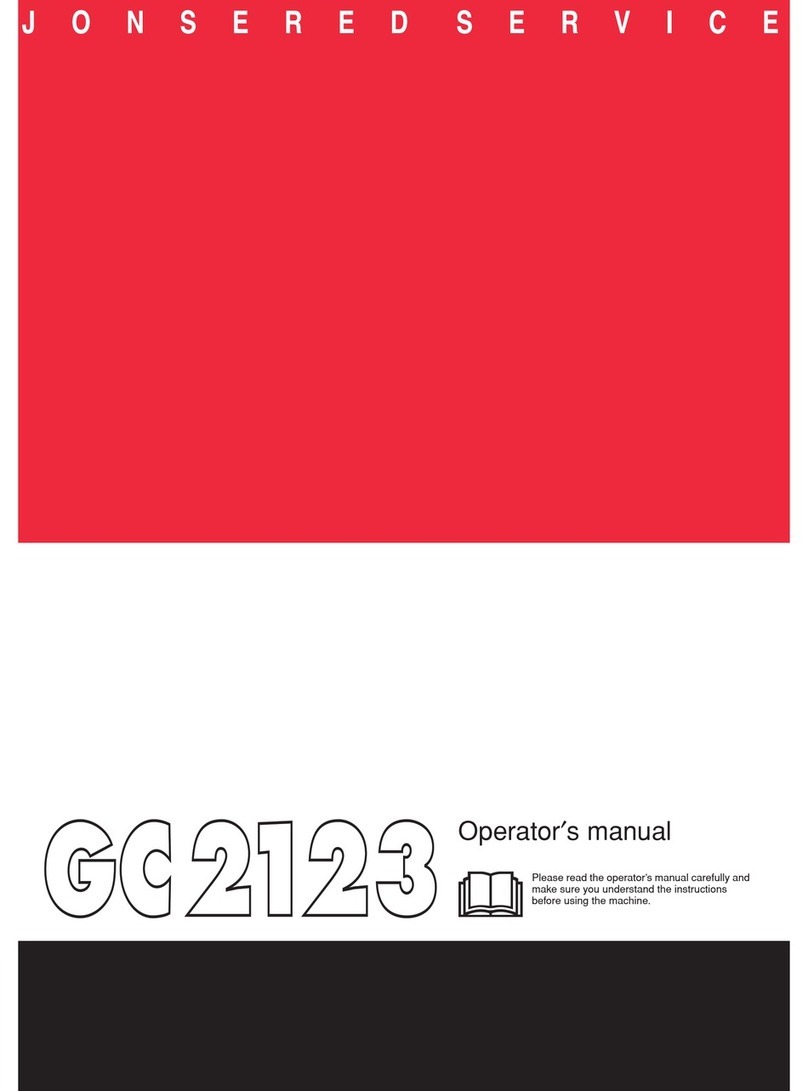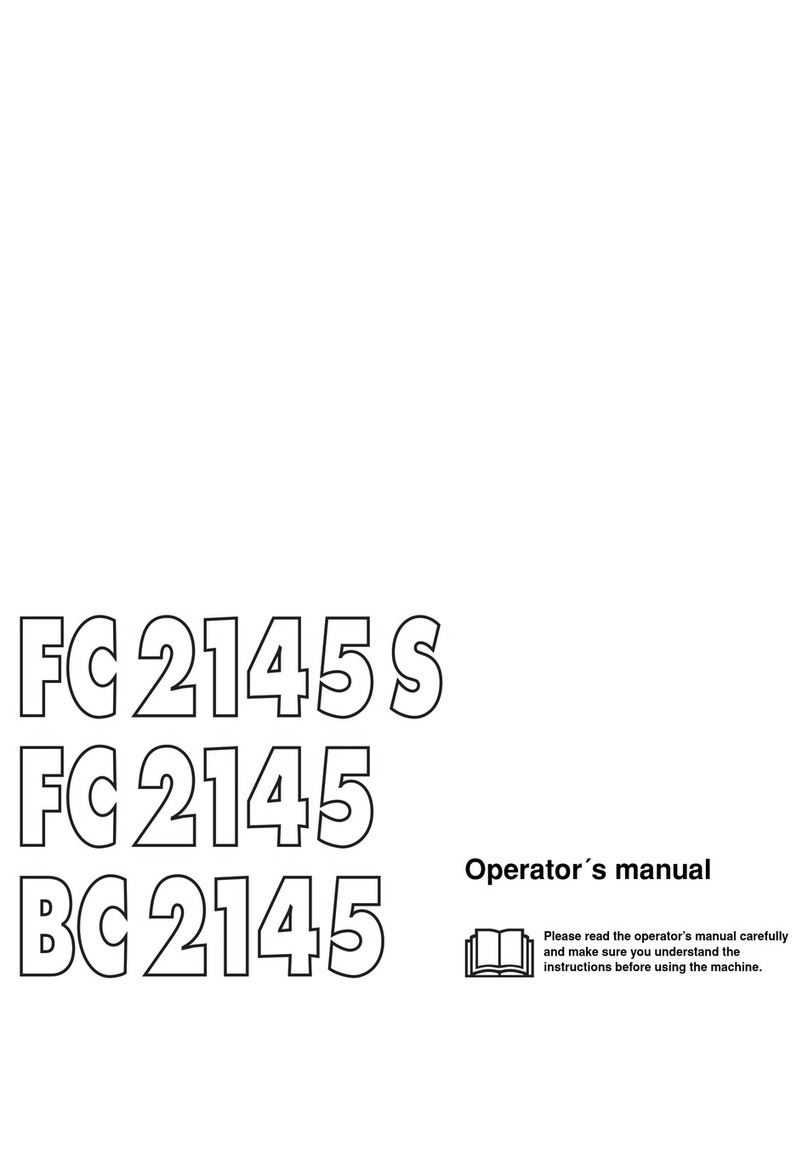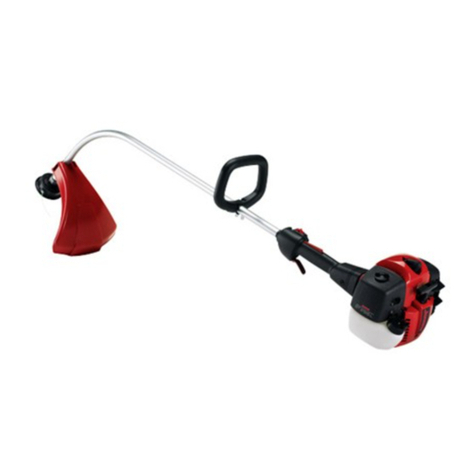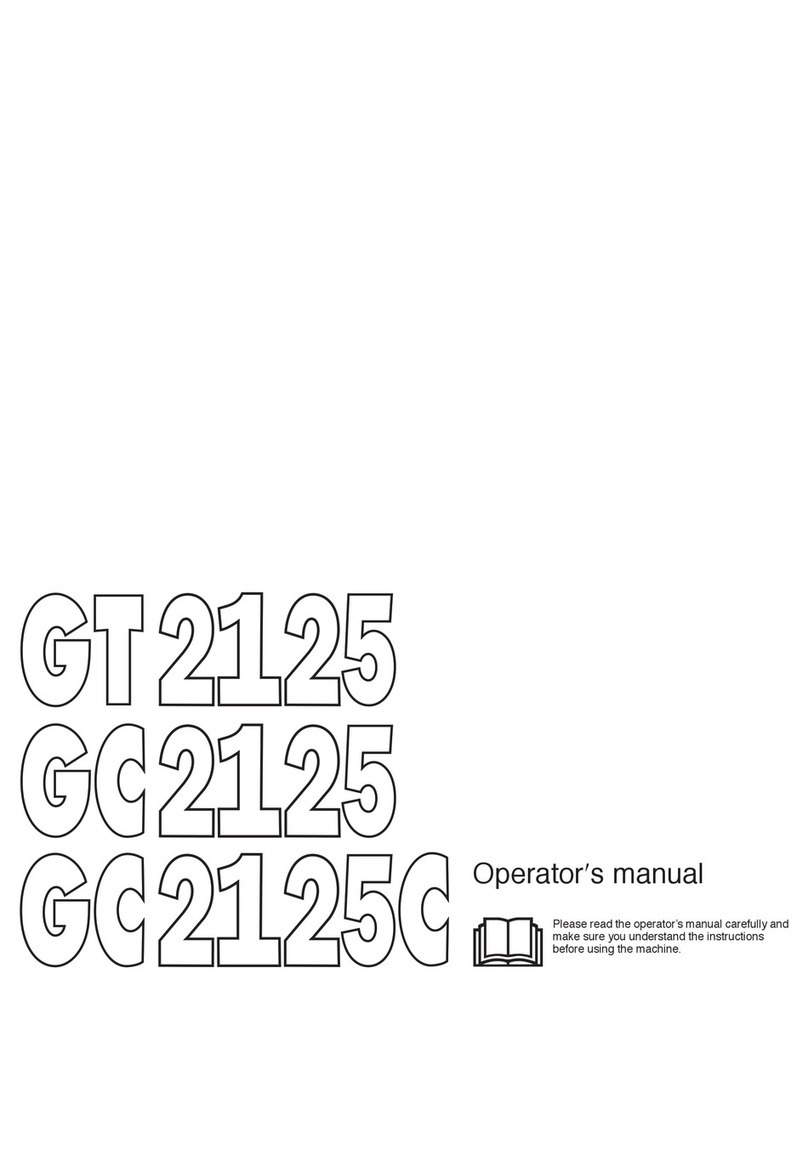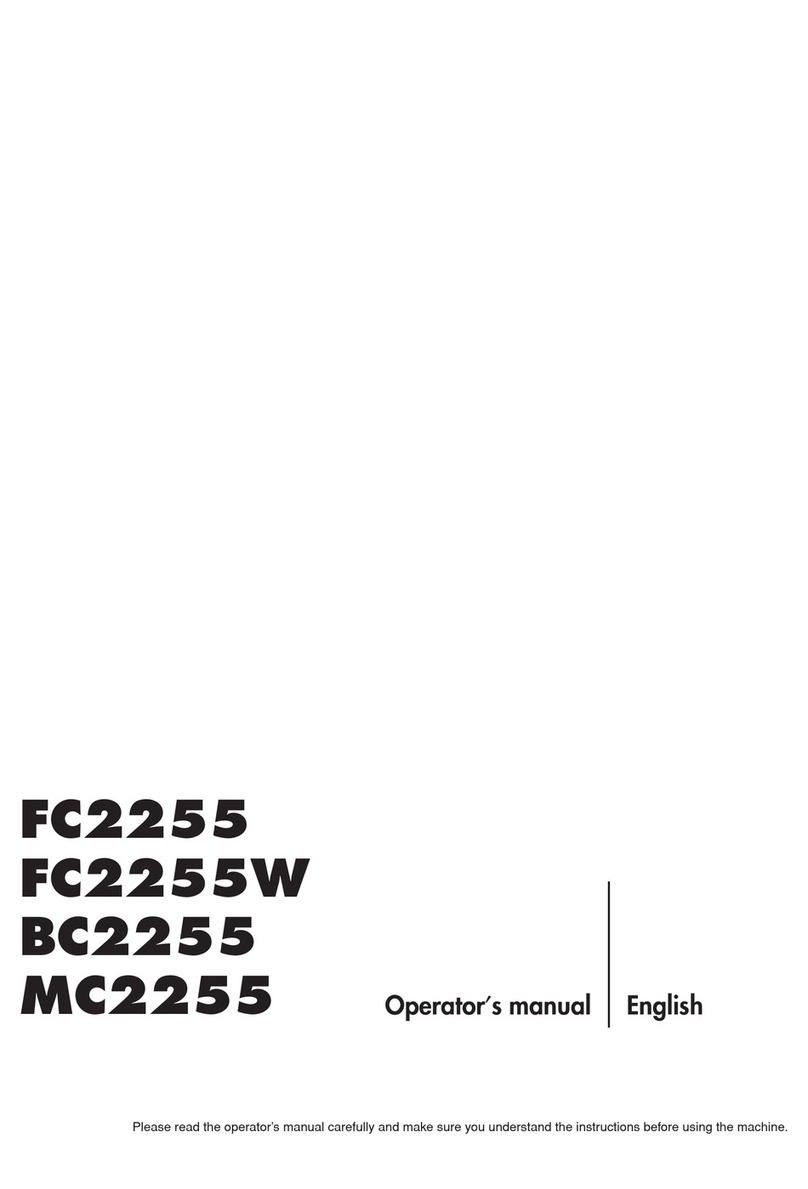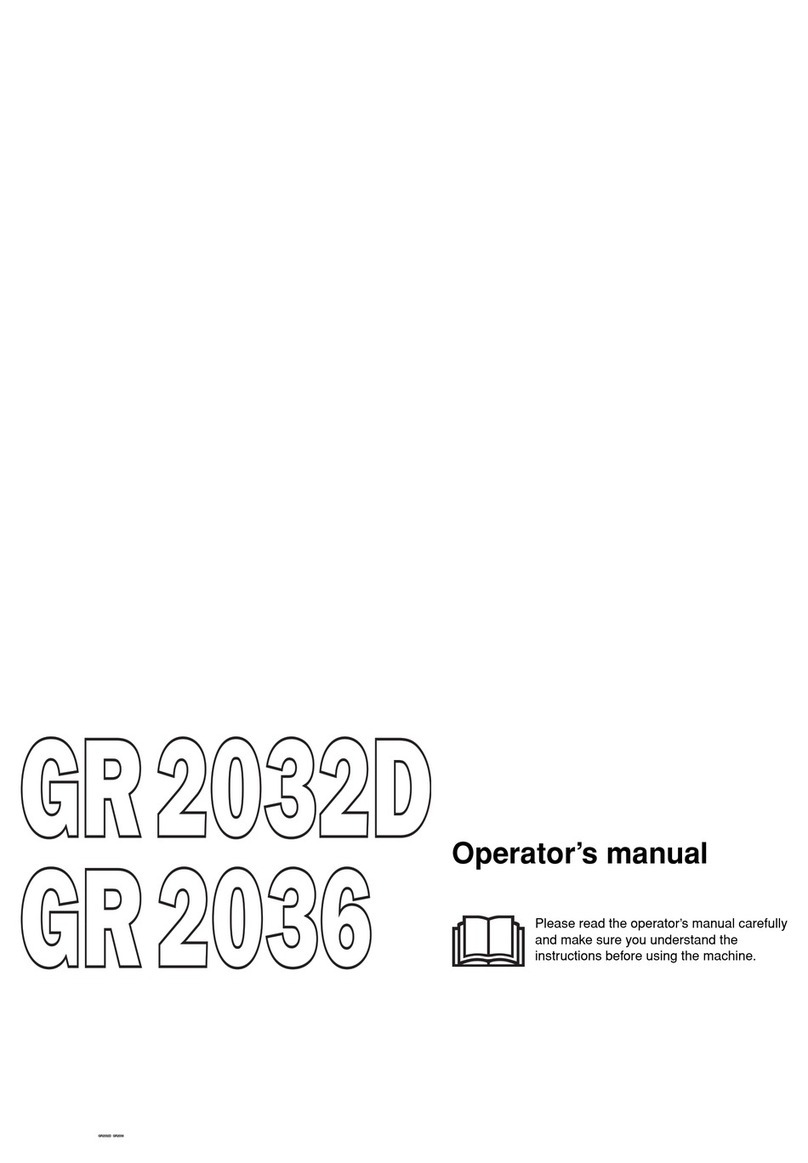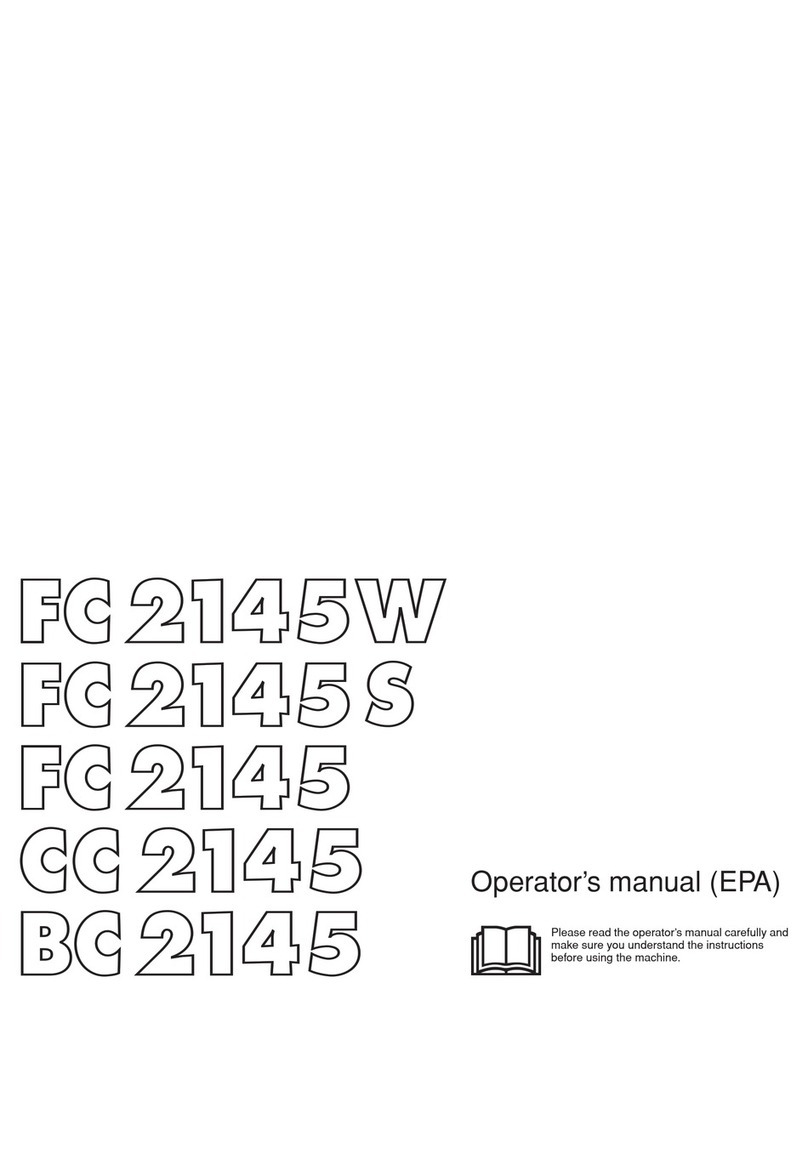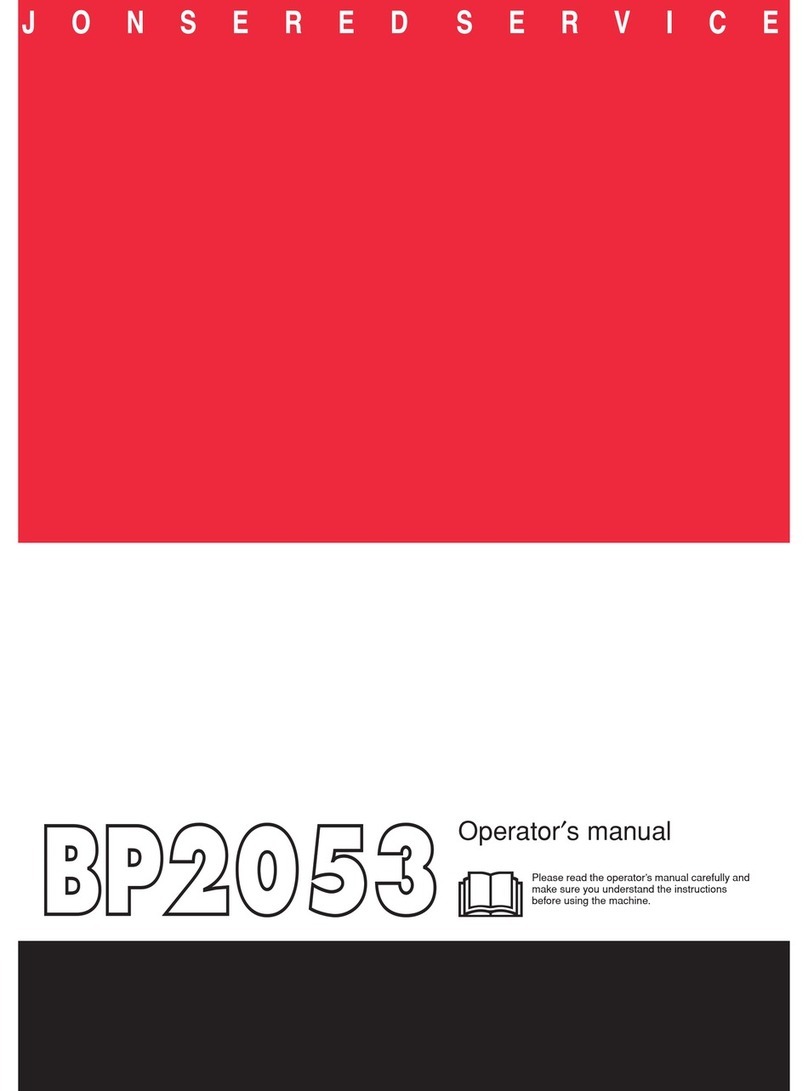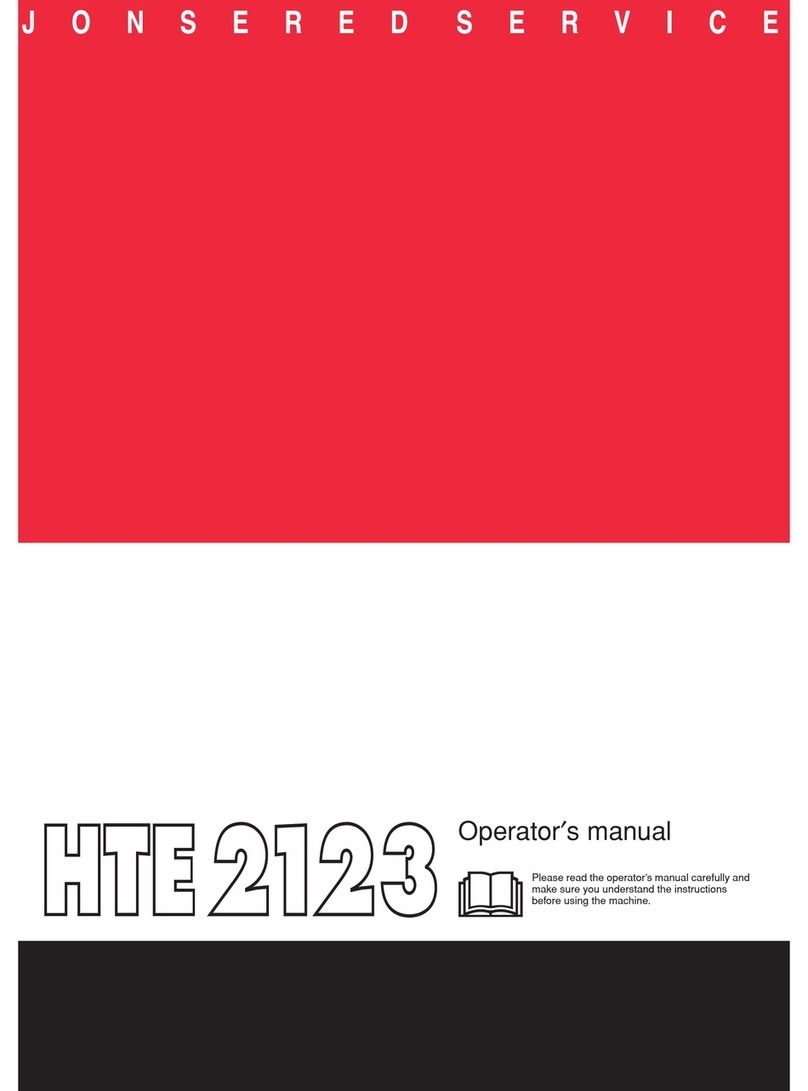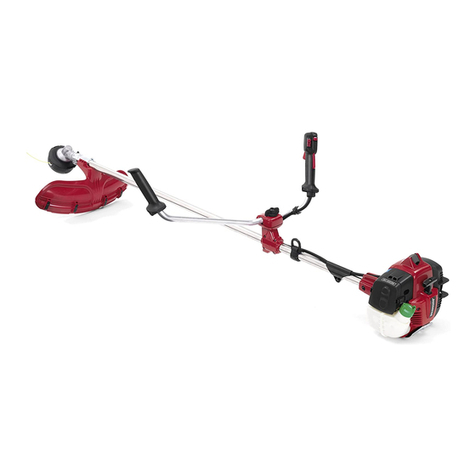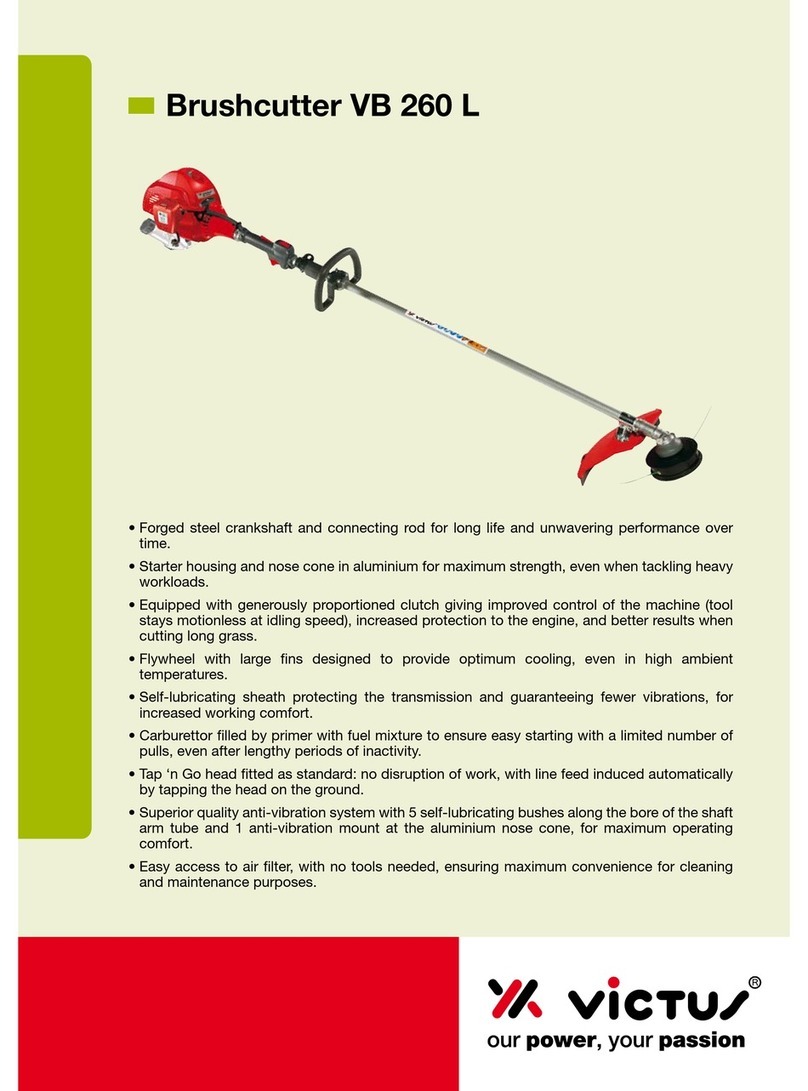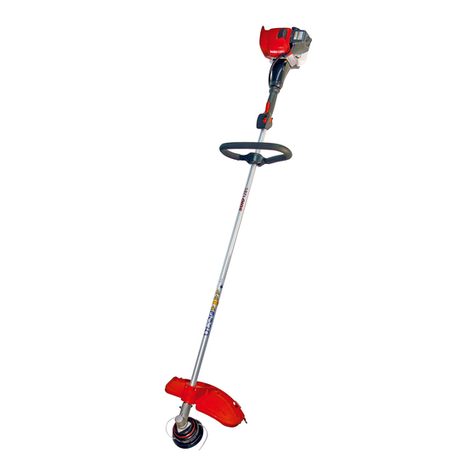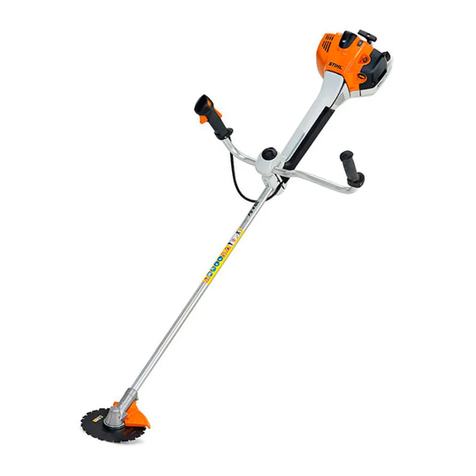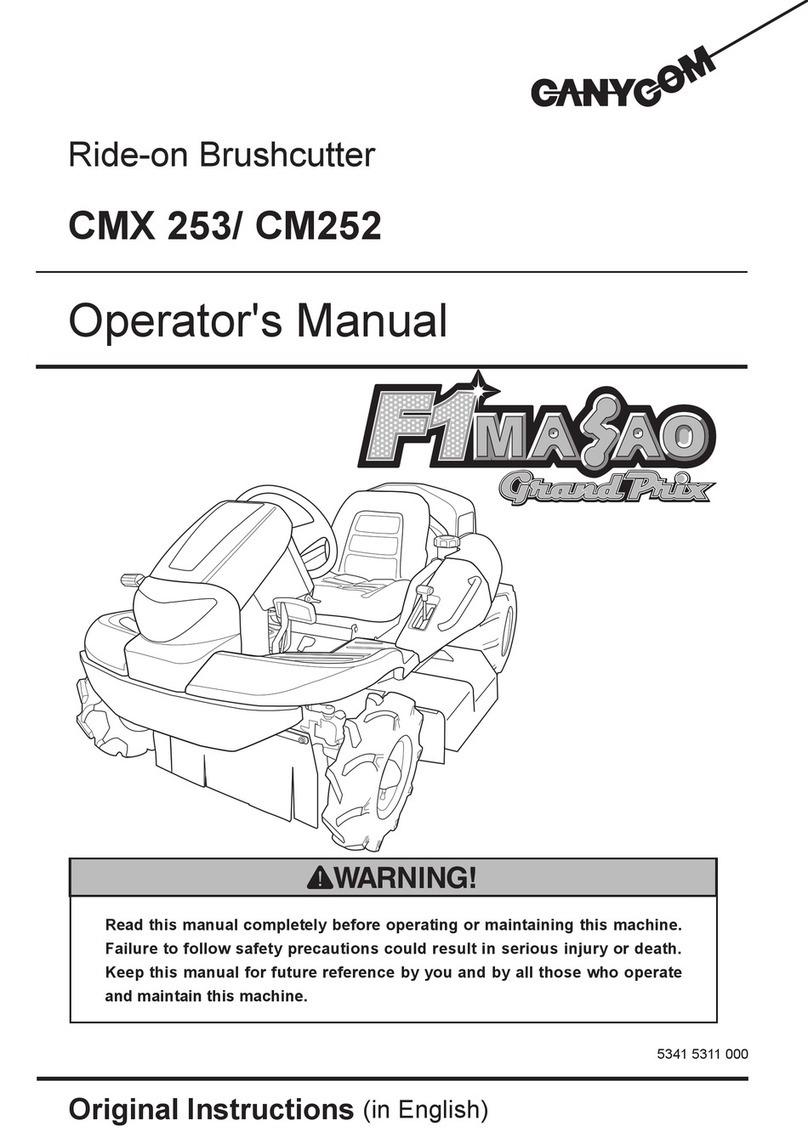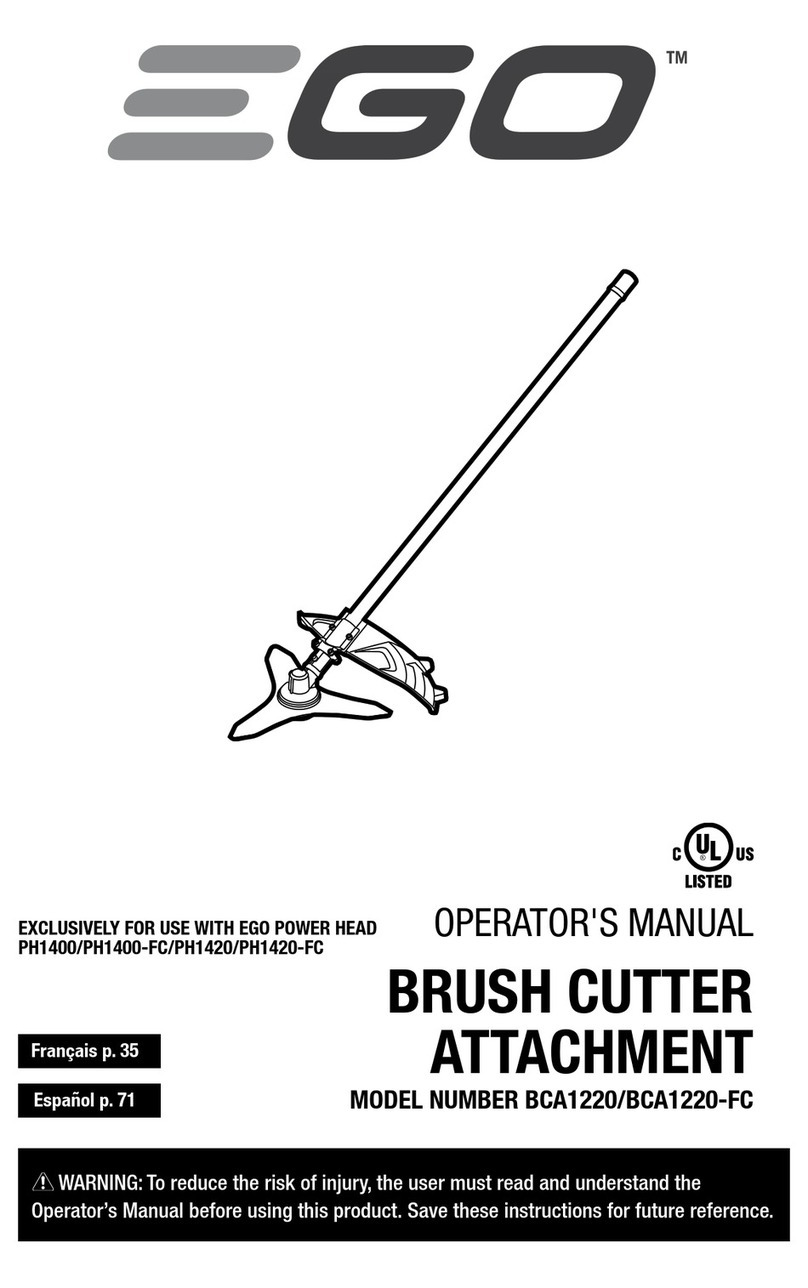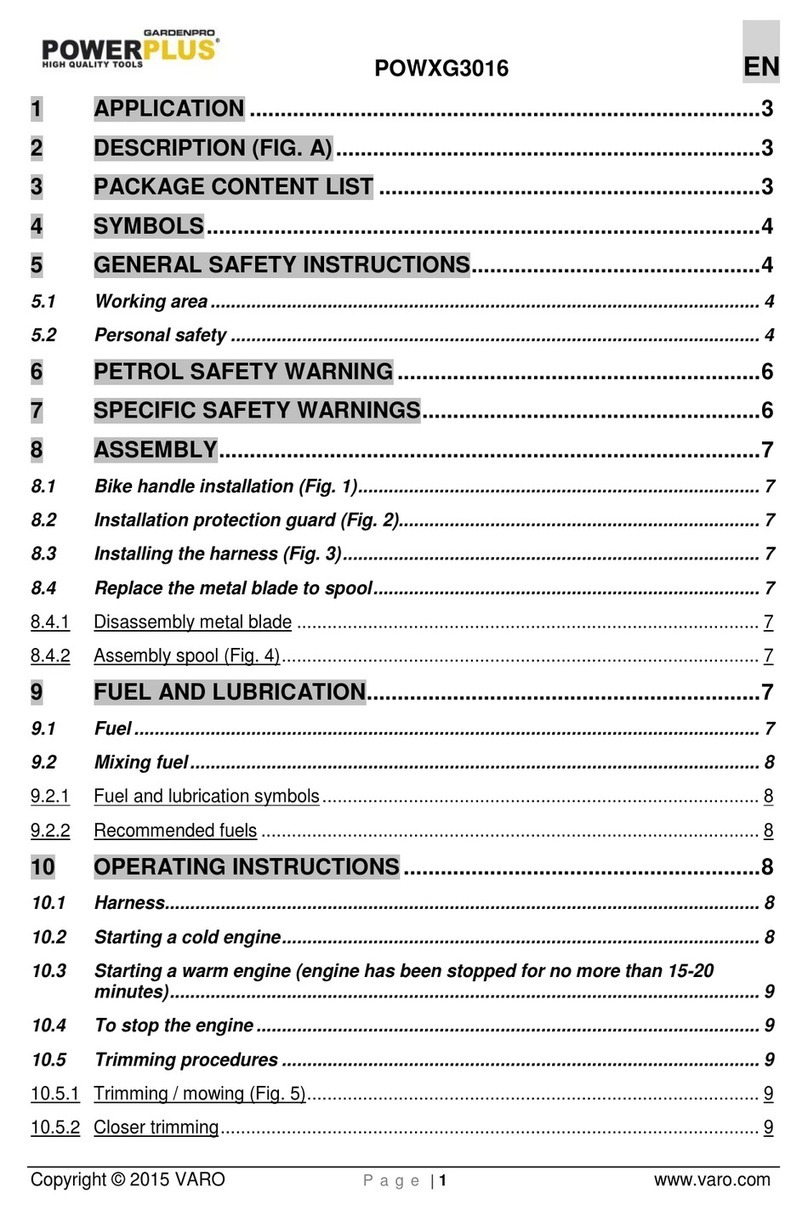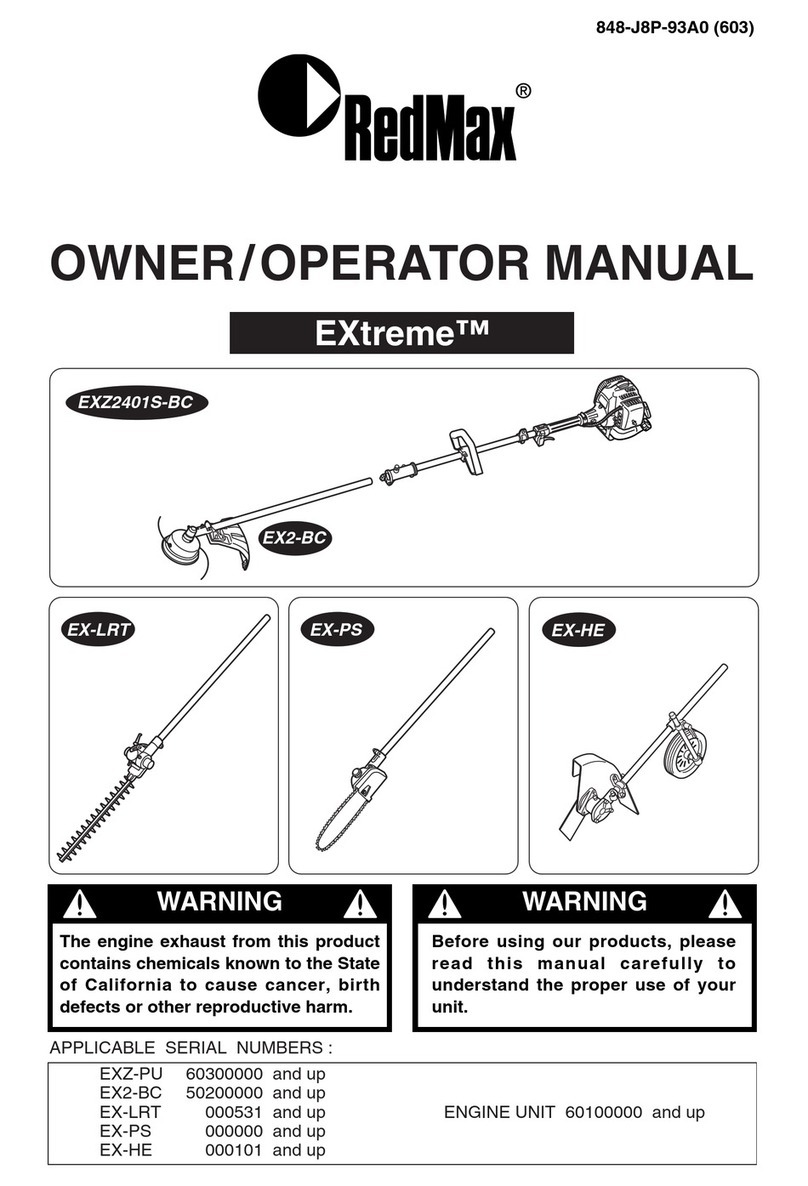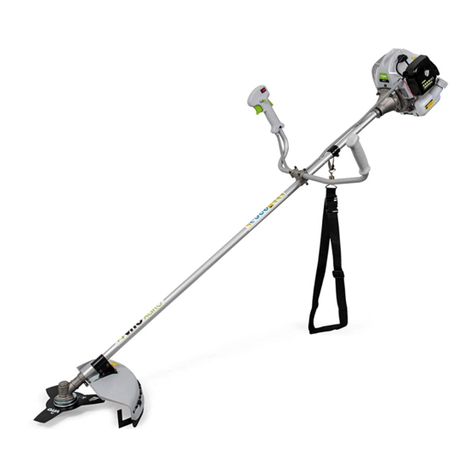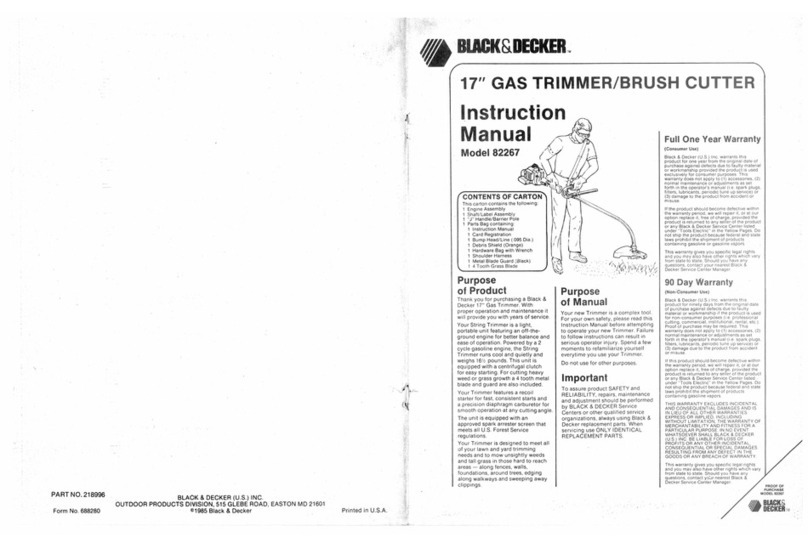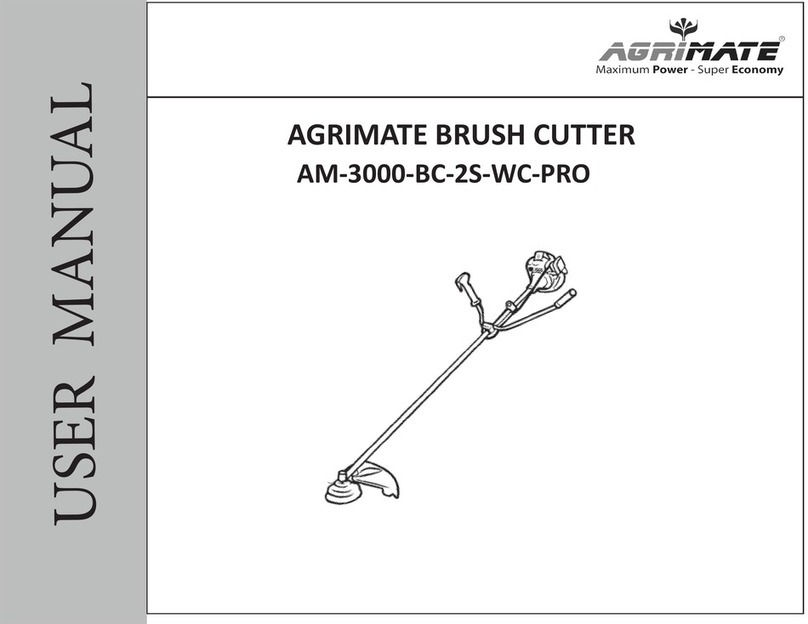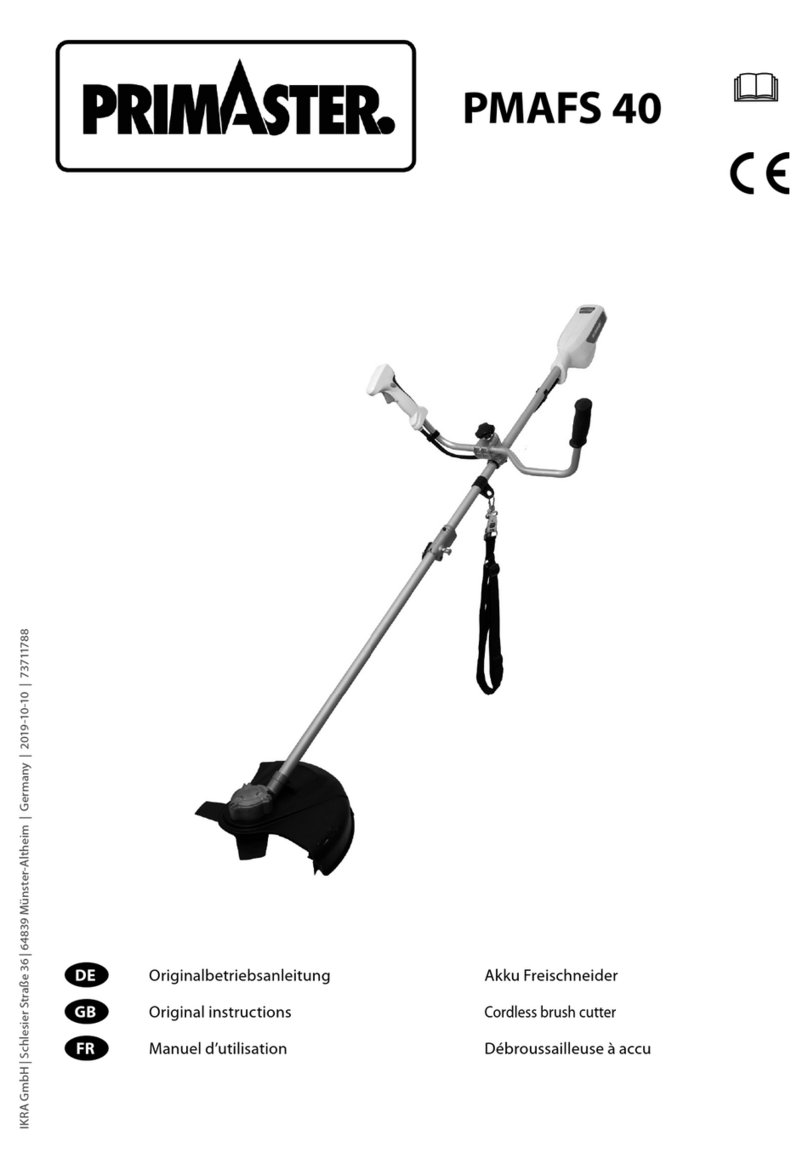9
fore releasing the throttle trigger from the
starting position. Release the throttle lock
by squeezing and releasing the throttle trig-
ger. NOTE: If engine dies with the choke
lever in the OFF CHOKE position, move the
choke lever to the HALF CHOKE position
and pull the rope until engine runs, but no
more than 6 pulls.
STARTING A WARM ENGINE
1. Move the ON/OFF switch to the ON posi-
tion.
2. Move the choke lever to the HALF
CHOKE position.
3. Set the throttle trigger in the starting posi-
tion using the throttle lock feature. Keep
throttle trigger in the starting position until
engine runs smoothly.
4. Pull starter rope sharply until engine runs,
but no more than 5 pulls.
5. Allow engine to run 15 seconds, then
move the choke lever to the OFF CHOKE
position.
NOTE: If engine has not started, pull starter
rope 5 more pulls. If engine still does not run, it
is probably flooded.
STARTING A FLOODED ENGINE
Flooded engines can be started by placing the
choke lever in the OFF CHOKE position; then,
pull the rope to clear the engine of excess fuel.
This could require pulling the starter handle
many times depending on how badly the unit is
flooded. If the unit still doesn’t start, refer to the
TROUBLESHOOTING TABLE.
OPERATING POSITION
ALWAYS WEAR:
Long Pants
Boots
Eye Protection
Cut from your left to your right.
Control Handle
in Right Hand
When operating unit, clip shoulder strap onto
clamp, stand as shown and check for the fol-
lowing:
SWear eye protection and heavy clothing.
SExtend your left arm and hold handlebar
grip with your left hand.
SHold throttle grip with your right hand with
finger on throttle trigger.
SKeep unit below waist level.
SKeep shoulder strap pad centered on your
left shoulder and danger sign centered on
your back.
SMaintain full weight of tool on your left
shoulder.
SWithout bending over, keep the blade near
and parallel to the ground and not crowded
into material being cut.
OPERATING INSTRUCTIONS FOR
USE WITH WEED BLADE
SBlade Thrust is a reaction that only occurs
when using a bladed unit. This reaction can
cause serious injury such as amputation.
Carefully study this section. It is important that
you understand what causes blade thrust,
how you can reduce the chance of its
occurring, and how you can remain in control
of unit if blade thrust occurs.
SWHAT CAUSES BLADE THRUST -- Blade
Thrust can occur when the spinning blade
contacts an object that it does not cut. This
contact causes the blade to stop for an instant
and then suddenly move or “thrust” away
from the object that was hit. The “thrusting”
reaction can be violent enough to cause the
operator to be propelled in any direction and
lose control of the unit. The uncontrolled unit
can cause serious injury if the blade contacts
the operator or others.
SWHEN BLADE THRUST OCCURS --
Blade Thrust can occur without warning if
the blade snags, stalls, or binds. This is
more likely to occur in areas where it is
difficult to see the material being cut. By
using the unit properly, the occurrence of
blade thrust will be reduced and the
operator will be less likely to lose control.
SCut only grass, weeds, and woody brush up
to 13 mm in diameter with the weed blade.
Do not let the blade contact material it
cannot cut such as stumps, rocks, fences,
metal, etc., or clusters of hard, woody brush
having a diameter greater than 13 mm.
SKeep the blade sharp. A dull blade is more
likely to snag and thrust.
SCut only at full throttle. The blade will have
maximum cutting power and is less likely to
bind or stall.
S“Feed” the blade deliberately and not too
rapidly. The blade can thrust away if it is fed
too rapidly.
SCut only from your left to your right. Cutting
on right side of the guard will throw debris
away from the operator.
SUse the shoulder strap and keep a firm grip
on the unit with both hands. A properly
adjusted shoulder strap will support the
weight of the unit, freeing your arms and
hands to control and guide the cutting motion.
SKeep feet comfortably spread apart and
braced for a possible sudden, rapid thrust of
unit. Do not overreach. Keep firm footing and
balance.
SKeep blade below waist level; it will be
easier to maintain control of unit.
SDo not raise the engine above your waist as
the blade can come dangerously close to
your body.
SDo not swing unit with such force that you
are in danger of losing your balance.
